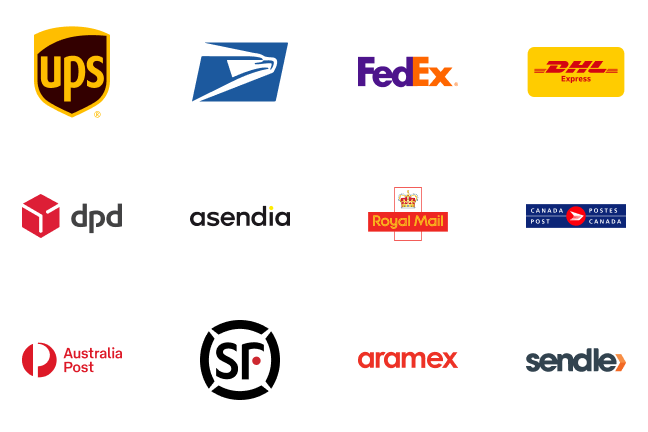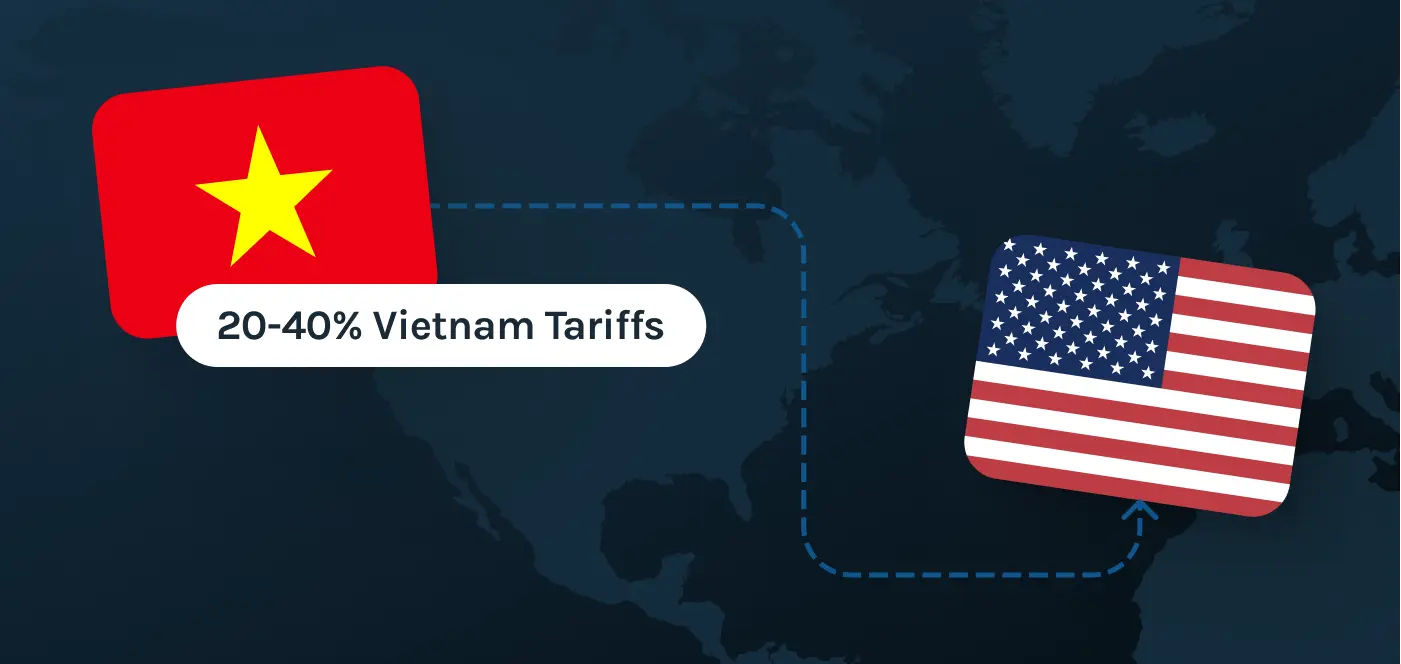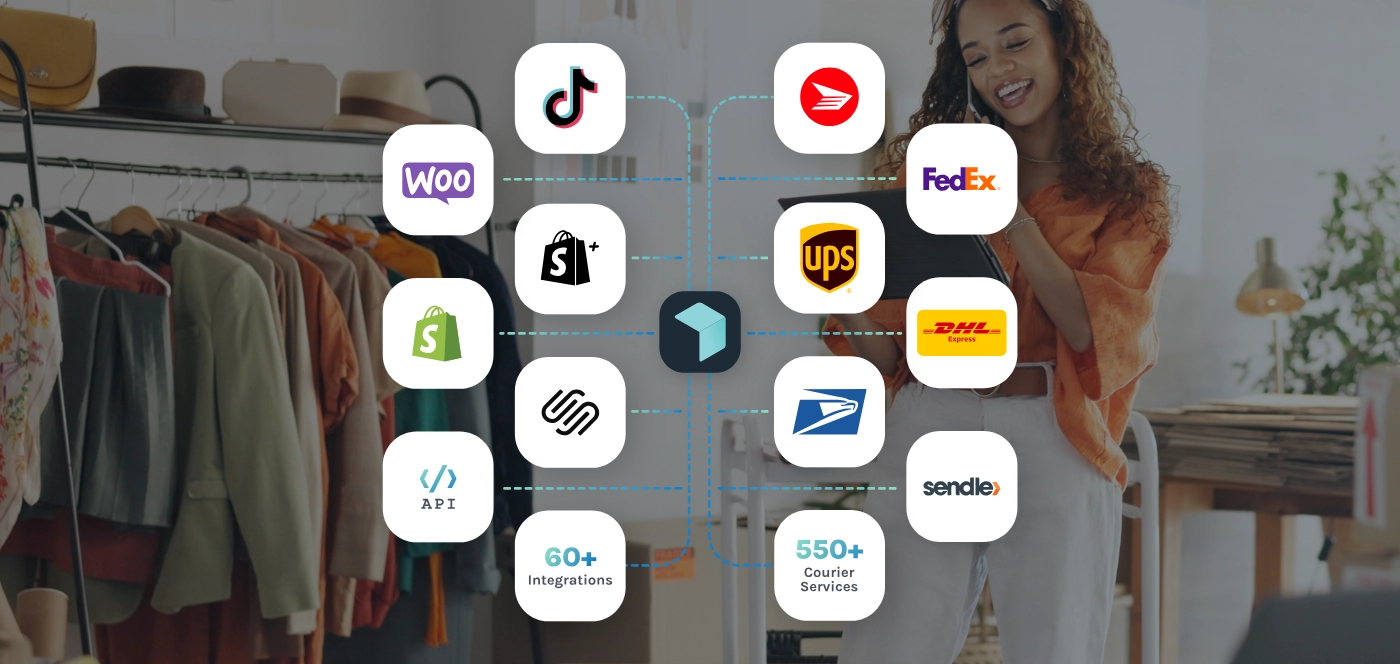If you sell or ship physical products online, you’ve probably heard some buzz lately about rising costs on goods imported from Mexico. As of August 2025, many U.S. businesses — especially small eCommerce brands — are facing a wave of new tariffs tied to border security, trade deficits, and political tension.
This guide breaks down what the tariff on Mexico really is, why it exists, how it affects your bottom line, and what you can do about it.
What Are Tariffs — and Why Is the U.S. Imposing Tariffs on Mexico?
A tariff is essentially a tax on traded goods. When the U.S. imports goods — say, handmade shoes from Guadalajara or car parts from Monterrey — it may charge an extra fee at the border. That cost often ends up passed along to store owners or customers.
Tariffs are also a powerful tool in trade policy. The U.S. government uses them to push trading partners like Mexico to meet certain goals — whether that’s stopping illicit drugs, enforcing fair trade, or negotiating better trade agreements.
So when President Donald Trump imposed new tariffs on Mexico in 2025, he didn’t just target cheap labor or steel imports. These were sector-specific tariffs meant to pressure other nations to align with U.S. positions on illegal immigration, organized crime, and economic cooperation.
Why the U.S.–Mexico Trade Relationship Is So Important for eCommerce Sellers
Mexico is the U.S.’s top trading partner, beating out Canada and China. In 2024, the two countries moved over $840 billion worth of goods. Much of that trade flows through Texas — which alone accounted for $281 billion — and includes everything from automotive sector products to fresh produce.
Under the USMCA trade deal (which replaced NAFTA), Mexican exports are typically tariff-free — as long as they meet certain rules of origin. But if those rules aren’t met, or if a country is found to be violating trade practices, tariffs apply.
What Changed in August 2025? Trump’s Tariffs Explained
In March 2025, the Trump administration gave Mexico and 20+ other countries 90 days to renegotiate trade agreements. During this time, nearly 90% of Mexican goods were exempt from higher tariffs.
But on August 1, that exemption expired.
Now, unless a new trade deal is signed, most Mexican imports face a 30% tariff. This hits passenger vehicles, fresh produce, electronics, even textiles. The pain is especially sharp for small businesses who don’t have bulk buying power or legal teams to navigate new costs. Additionally, the de minimis exemption was also suspended, which means that lower value orders (under $800) which were previously exempt from taxes, are now also taxed.
Here’s a snapshot of current rates:
| Product Type |
Tariff Rate |
Notes |
| Non-USMCA auto parts |
25% |
Must meet origin requirements |
| Steel and aluminum |
50% |
Includes raw and fabricated materials |
| Selected pharmaceutical inputs |
25% |
Related to fentanyl and drug enforcement |
| Certified USMCA goods |
0% |
Must have proper documentation |
What Trump’s Executive Order Says
Trump wrote in Executive Order 14257 that America’s “persistent annual trade deficit” is a national emergency. He argued that non-tariff trade barriers, money laundering, and illegal drugs flowing across the southern border justify raising duties on other countries, especially those “not aligned with U.S. interests.”
President Trump claimed these moves were necessary to protect the economy and national security. Critics, however, have warned that retaliatory tariffs from Mexico or Canada could lead to higher prices and lost jobs — especially in the automotive industry, food supply, and cross-border logistics.
What eCommerce Sellers Can Do to Navigate the New Tariffs on Mexican Goods
If you're a small or midsize business, you're probably not lobbying Treasury Secretary Scott Bessent or negotiating exemptions. But you can take a few smart steps:
- Build flexibility into your pricing to absorb cost swings: By keeping margins adaptable, you can adjust prices quickly without shocking customers or cutting too deeply into profits when tariff costs shift.
- Work with suppliers to confirm rules of origin: Ensuring accurate documentation can prevent unnecessary tariff charges and help you qualify for exemptions under trade agreements.
- Enable real-time shipping rates at checkout using third-party solutions like Easyship: Passing updated shipping costs directly to customers keeps your store competitive and transparent, so you don’t have to shoulder unexpected fees.
- Consider alternative trading partners if tariffs make certain routes unsustainable: Diversifying sourcing markets reduces dependency on any single trade relationship, keeping your supply chain resilient.
- Try using a US-based fulfillment center to reduce tariff costs: Shipping in bulk to the US, then distributing locally, can lower per-unit costs and minimize exposure to tariff-heavy routes.
- Diversify your suppliers and digitize customs compliance: Long-term, spreading risk across multiple partners and using automated compliance tools ensures you stay ahead of trade changes and avoid costly mistakes.
Also, think long-term. Diversify your suppliers and digitize customs compliance. Tariffs aren’t going away. But neither is your store — as long as you plan ahead.
How Do I Qualify for Zero Tariffs Under the USMCA Trade Deal?
To avoid higher tariffs, sellers must prove their goods meet USMCA standards. That means:
- At least 75% of materials or labor must come from the U.S., Mexico, or Canada
- A Certificate of Origin must be issued by the supplier
- Documents must be kept for customs audits
- HS codes must match the product type exactly
If you’re unsure whether your imports qualify, don’t guess. Easyship’s Duty & Tax Calculator can help you validate in minutes — or refer you to a customs expert.
How Trump’s Tariffs Are Disrupting Mexican Imports and Supply Chains
For eCommerce sellers, these new tariffs mean more than just math. They affect sourcing decisions, product pricing, and delivery timelines. More than anything, cross-border shipping is already complicated enough as it is, without additional issues.
Using a shipping platform like Easyship could make it easier to handle international shipping during this difficult time.
Easyship Case Study
Satisfye, a gaming accessories brand, faced high fulfillment costs and limited courier options when shipping internationally, relying on just two carriers. By integrating Easyship with their sales channels like Shopify, Amazon, and Kickstarter, they gained access to 13 courier services, 3 global warehouses, and automated tools for customs, shipping labels, and delivery.
This streamlined approach enabled them to process over 70,000 orders to 80+ countries, with 35% of sales shipped outside the U.S., while saving approximately $60,000 in fulfillment costs.
In the current climate of increased tariffs, such as those imposed by the Trump administration, Easyship’s ability to calculate accurate landed costs, diversify courier options, and enable fulfillment from multiple hubs becomes critical — helping brands like Satisfye remain competitive by rerouting shipments, controlling costs, and maintaining healthy margins despite higher import duties.
Can I Route Through Other Countries to Avoid Higher Tariffs?
Trying to sneak around tariffs by routing Mexican goods through other countries? Think again. Customs and Border Protection is cracking down.
If your goods are flagged as transshipped (i.e. mislabeled origin), you’ll pay:
- 40% duty (not a typo)
- Potential seizure of goods
- Fines under U.S. law (19 U.S.C. 1592)
Customs now publishes lists of facilities and countries involved in circumvention schemes. Stay far away — or ensure your 3PL provides clean documentation.
Will There Be a New Trade Agreement Between the U.S., Mexico, and Canada?
Mexican President Claudia Sheinbaum has signaled optimism. Talks continue between Mexican officials and U.S. negotiators. But as of now, there's no clear resolution.
Trump announced that any new deal would have to include commitments on drug trafficking, illegal aliens, and organized crime at the northern and southern borders.
Until other nations meet those terms, the U.S. is sticking with Trump’s tariffs — and possibly expanding them.
What Is the Total Cost of the New Tariffs on Mexico in 2025?
If you import goods from Mexico, here’s what you need to know:
- Most Mexican goods now face 25%–50% tariffs unless USMCA rules are met
- These policies are tied to national security, trade deficits, and immigration enforcement
- eCommerce sellers should check landed costs, origin rules, and update shipping policies ASAP
- Easyship can help you compare rates, manage duties, and avoid overpaying
Ready to simplify and save on shipping?
Easyship is here to help.
Easyship helps eCommerce sellers stay profitable in a changing trade environment. With reciprocal tariffs, customs duties, and new rules for cross-border orders, our free shipping tools and smart dashboard are built to help you ship smarter and sell globally—without the stress.
Frequently Asked Questions About the Tariffs on Mexico
What is the current tariff on Mexican goods in 2025?
As of August 2025, most Mexican imports face tariffs ranging from 25% to 50%, depending on the product category. For example, steel and aluminum imports are taxed at 50%, while non-compliant auto parts are subject to 25%. Products that qualify under the USMCA trade agreement may still enter tariff-free if proper documentation is provided.
Why did President Trump impose tariffs on Mexico?
President Donald Trump imposed new tariffs as part of a broader strategy to address national security concerns, illegal immigration, organized crime, and the ongoing U.S. trade deficit. According to Executive Order 14257, these tariffs aim to pressure Mexico and other countries into fair trade negotiations and stronger border enforcement.
Are there ways to avoid paying these tariffs?
Yes. To avoid paying tariffs on Mexican goods, importers must prove their shipments qualify for zero tariffs under the USMCA. This includes showing that goods meet the rules of origin, having a valid Certificate of Origin, and using accurate HS codes on customs paperwork.
What happens if I try to route goods through other countries to avoid tariffs?
This is known as transshipment, and it's considered illegal by U.S. Customs. If you're caught, you could face a 40% penalty tariff, seizure of goods, and heavy fines. Always ensure your imports are correctly labeled and documented to avoid compliance issues.
Will the tariffs on Mexico change again soon?
That depends on the outcome of trade talks. As of now, no final agreement has been reached between the U.S., Mexico, and Canada. Mexican officials remain optimistic, but the Trump administration has made it clear that any new trade deal must include stronger commitments on immigration and security enforcement at both borders.















































.svg)
.svg)






.avif)
.avif)

.avif)
.avif)


.avif)


.avif)










.avif)
.avif)



.avif)
.avif)


.avif)
.avif)


.avif)











.svg)








